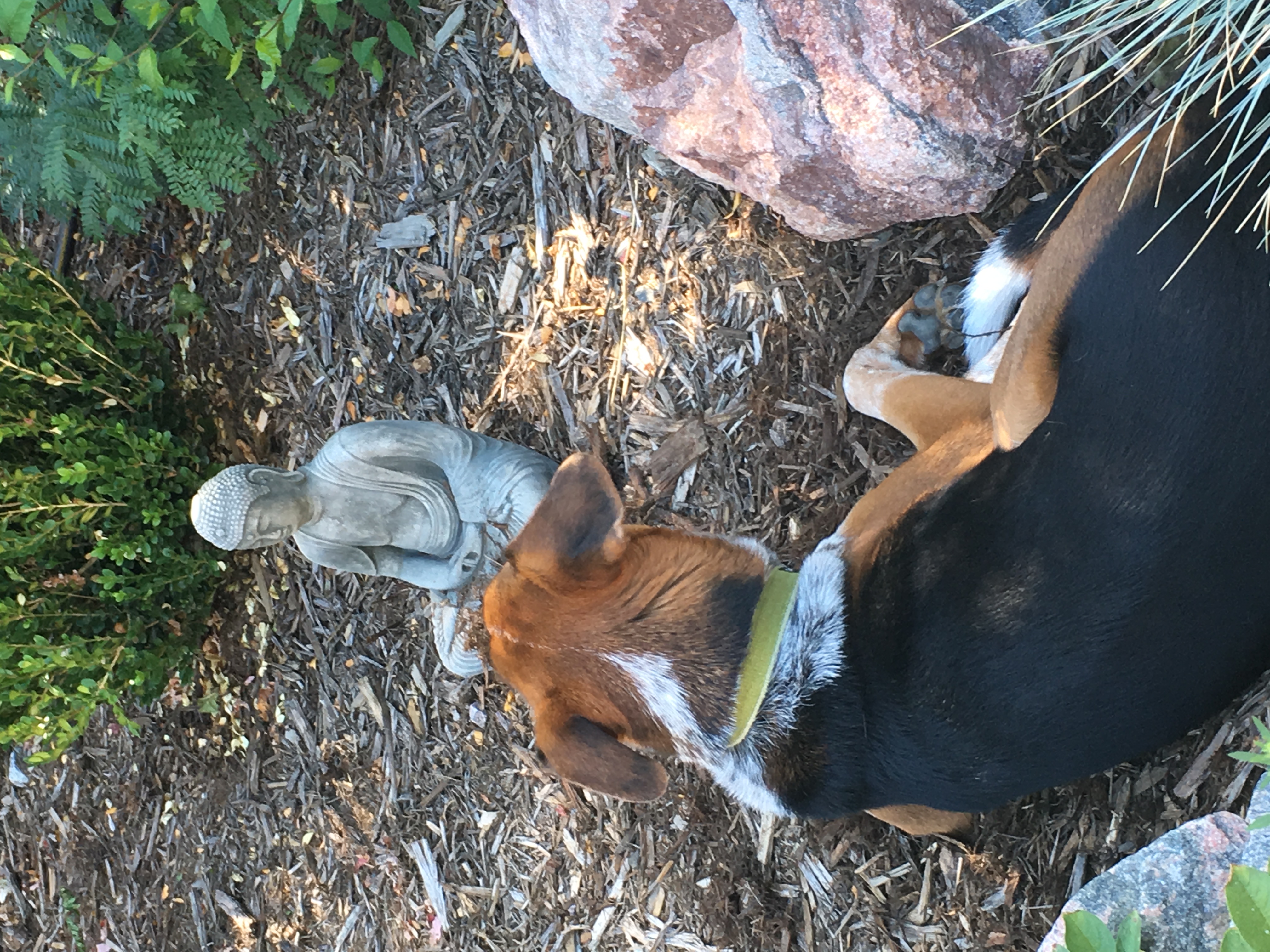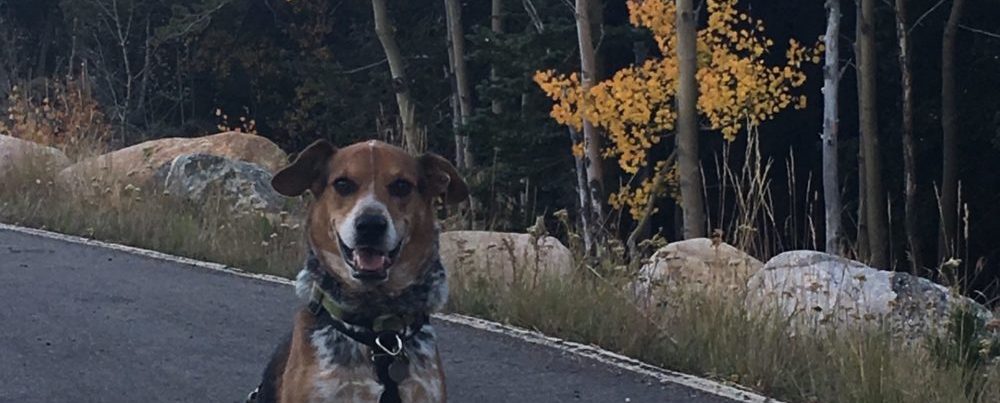
COME!
Come to the cushion, the chair or wherever you can rest comfortably for a few minutes. Come away from the computer, the errands, the to-do lists. Set yourself up for success: Silence your phone and tell others in the household you will be unavailable for whatever length of time you decide on. Be sure your dog has had an opportunity to exercise and go outside before you settle in, and if you think your dog is likely to struggle with you being nearby but unavailable, provide him or her with a stuffed frozen toy or other chew.
SIT
Find a comfortable, quiet place to sit or lie down.
STAY
Set a timer for the desired period. If you only have 2 minutes, or if you struggle with meditating, 2 minutes is great. As you practice consistently, there might be a time when you feel like 2 minutes isn’t enough, so you can push it to 5, then 10, etc. Note you can always go back to 2 if you are short on time or too stressed out or uncomfortable to sit any longer than that. It is generally more effective to start for a short period and build, as opposed to forcing yourself to start at, for example, 20 minutes and finding it so aversive that you end up dreading the practice or avoiding it all together.
PRACTICE:
Close your eyes. Take 3 deep breaths. As you inhale and exhale, notice the coolness in your nostrils or the expansion and contraction of your chest or belly. You might imagine with each exhale that the muscles in your neck, shoulders and back are starting to loosen.
Now allow your breath to resume its natural rhythm. At this point, you do not need to force any kind of deep or sustained breath. Just meet your body where it is in this moment, breathe however feels natural, and observe.
As you settle in, expect a barrage of thoughts, emotions, sensations, overall noise in your head and discomfort/pain in your body. Most people experience a few moments of this and think, meditation is not for me, I’m no good at it, my mind is too busy, I’ve tried it before, it just doesn’t work for me. In fact, wandering is what minds do, and discomfort is normal and part of the process. Allow yourself some grace, and feel free to shift your position as needed for comfort.
LEAVE IT
Thoughts, emotions, sensations will come. Notice them arise but see if you can avoid chasing after them. This can be incredibly hard to do. If you try to Leave a thought and observe your mind grabbing onto it instead, there is no need to scold yourself, or your mind might only hold on tighter. Instead, exhale and then bring your attention back to the sensations of your breath.
DROP IT
If you are unable to Leave it, see if you can Drop it. In order to Drop it, trade the thought, emotion, or sensation that you are holding onto for something else. In other words, give your mind something else to chew on.
Some suggestions:
Counting — Count each breath from 1-10. When you get to 10, return to 1 and start over. If you catch yourself at 12, or 20, or 100, simply come back to 1 and start again. No need to punish yourself for losing track, it is part of the process. Instead, you can celebrate when you notice you caught yourself, since that -right there- is the moment of awareness we are cultivating.
Noting — As thoughts arise, repeat silently “…thinking”. You might feel pain in your back, knees or other areas, or emotional pain in your heart, repeat silently “pain….pain”. If you are sleepy, think “sleepy…sleepy” and so on.
Repeat a mantra, phrase, or prayer, either out loud or silently to yourself. For example, “May all dogs everywhere be happy and free from suffering.”
HEAL
Bring to your mind a dog that is special to you. If you are fortunate enough to have one nearby, gaze at him or her for a few moments. Otherwise picture a beloved one in your mind. Your mind is likely to wander again…see if you can come back for just a little longer to appreciate the dog in all his or her precious dogness. Note how hard it was for you to Come when you had other things vying for your attention, to Sit still when you were bored or uncomfortable, to Stay when you felt the urge to get up, to Leave the things that were hard to leave, to Drop the things you wanted to hold on to…Spend some time reflecting on how difficult these skills can be for your dog as well. Aspire to be more mindful of this in the future and to make changes to your own behavior and expectations where necessary.
Inhale deeply, breathing in a sense of compassion, empathy, and connectedness, and as you exhale, send love and deep appreciation to your dog and all dogs everywhere.
CELEBRATE! POSITIVELY REINFORCE…yourself
When the timer goes off, take a few moments to appreciate and thank the part of you that brought you to this practice, as well as all the conditions that made it possible.
Please remember that, like dog training, meditation is a process that involves a set of skills that require practice, both physically and mentally – and for most of us, guidance. For best results, look for resources and practice opportunities in your area or on-line.
**If you deal with severe pain or trauma that comes up while you are doing this exercise, please do not try to force yourself to sit through it. This is flooding, and we shouldn’t put ourselves through it anymore than we should put our dogs through it. Consult professionals and teachers to learn how to do this practice safely, without exacerbating any problems.
